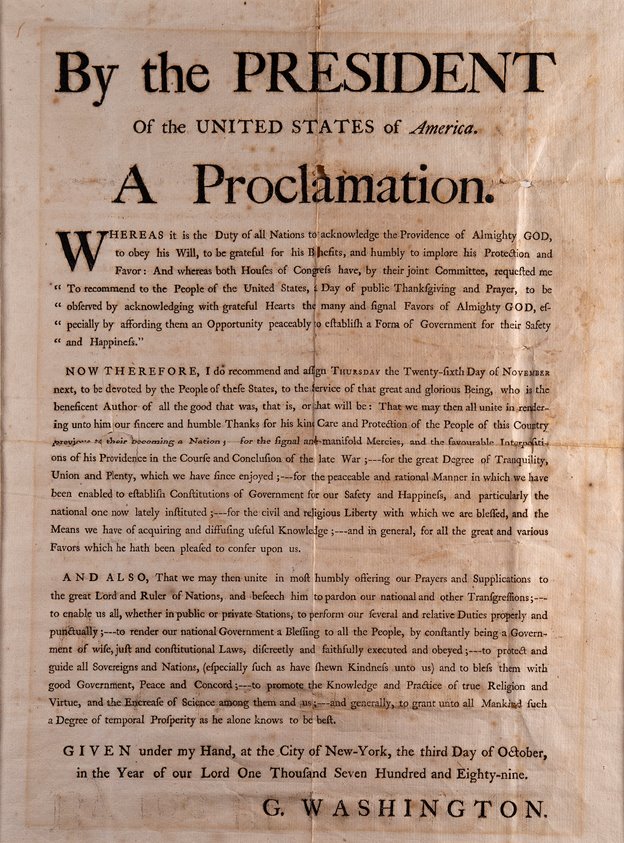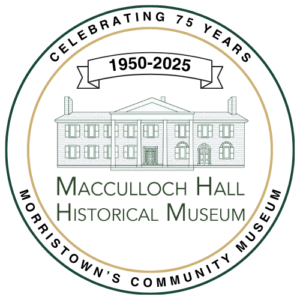Understanding the significance of Thanksgiving in American history does not end with the pilgrims in the autumn of 1621. The American tradition of slowing down for a bountiful meal, connecting with family and friends, and taking time to be thankful developed over hundreds of years.
Presidents George Washington, Abraham Lincoln, and Franklin Roosevelt all contributed to the Thanksgivings holiday we celebrate. On October 3, 1789, President George Washington issued a proclamation designating Thursday, November 26, 1789, the national day of thanks. New Jersey representative Elias Boudinot (1740-1821) from Elizabeth, New Jersey played a role in Washington’s issuing of this proclamation, considered to be the first national celebration of Thanksgiving. Almost 75 years later in 1863, President Abraham Lincoln, referring to Washington’s proclamation, set a day of national Thanksgiving on the final Thursday of November. Nineteenth-century author and activist, Sarah Josepha Hale (1788-1879), was instrumental in influencing Lincoln to establish a moment of thanksgiving, even during a time of Civil War. In 1939, President Roosevelt moved the Thanksgiving holiday to the third Thursday in November to help the economy. In 1941, Congress reversed this decision returning the Thanksgiving holiday to the fourth Thursday in November.
To see an original broadsheet of Washington’s 1789 Thanksgiving Proclamation from Macculloch Hall Historical Museum’s collection and hear two stories about Thanksgiving visit: https://www.facebook.com/336828221475/videos/1476215415902942
Examine George Washington’s 1789 Thanksgiving Proclamation up close: https://www.mountvernon.org/george-washington/the-first-president/thanksgiving/
Learn more about Sarah Josepha Hale: https://www.womenshistory.org/education-resources/biographies/sarah-hale

Topic: Celebrating Holidays
Age / Level: 1, Primary, Elementary, Middle

